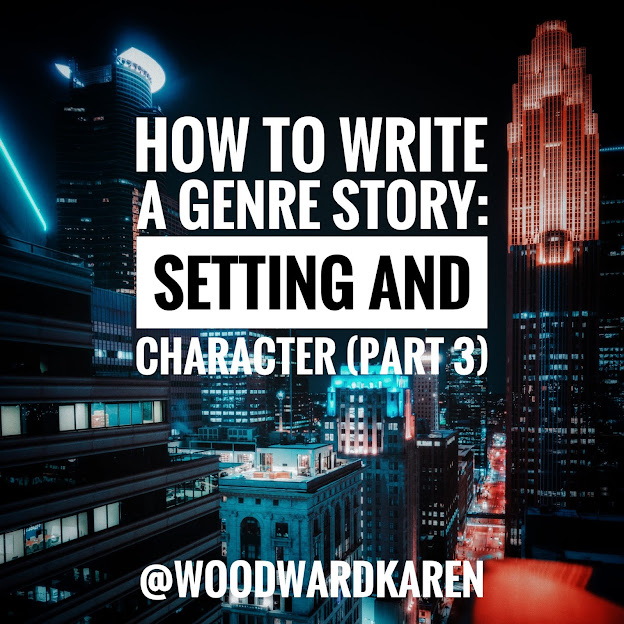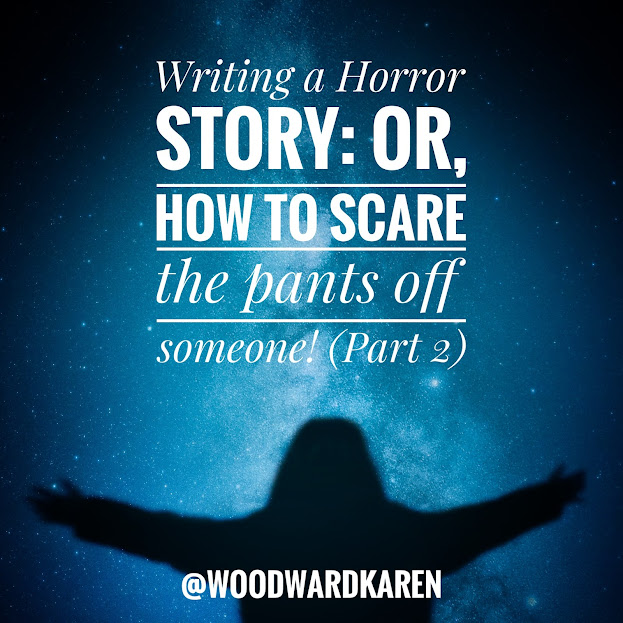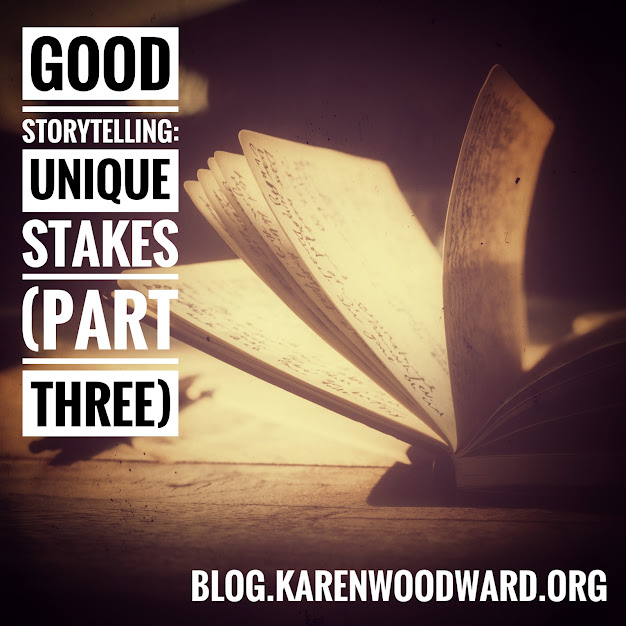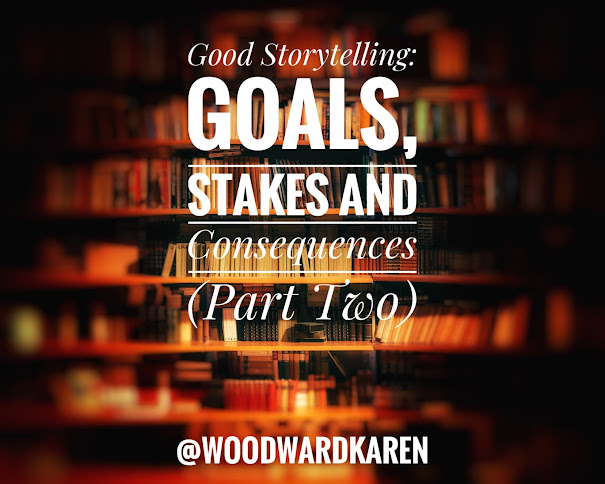2. Setting And Character
I've already written about the importance of the social environment of the story for character development (see the links at the end of this article), and given that we are social critters, it’s obvious that it would be significant, but I want to step back for a minute and ask what will at first seem like a silly question: Why?
Why is it the case that the social environment is so important for character development? It is the social environment, the society, that sets the rules for what counts as acceptable conduct. The society sets up the specific expectations for your character, how they should act, who they should love, what profession they should study, and so on. The social environment sets up what the society thinks the character’s goals should be, it sets up the default value structure.
(And this is one reason that the first five or ten percent of a story is so important, because you’re setting up these background conditions, conditions that everything else in your story will contrast against.)
Of course your character will depart in various ways from what is expected of them, and that’s good. That creates conflict. However, everything depends upon making it clear what values your hero is departing from.
Shared Customs
As Dwight V. Swain says in his excellent book, Creating Characters: How To Build Story People, shared customs (customs such as which clothes are acceptable for which occasions) and appropriate behaviors (for example, how to behave in a church as opposed to a temple as opposed to a mosque as opposed to a synagog as opposed to...) are just the sort of things that breathe life into, and that differentiate, characters.
When developing a character I ask myself what social rules and practises, what rituals and traditions, this character follows.
Another thing I try to pay attention to when creating a character is the distinction between knowing a social custom and following it. Perhaps a character knows that Custom A is mandatory, but do they follow it? Perhaps they follow it in public but not in private. Perhaps if they are given an opportunity to depart from the norm, they will. Or maybe they won’t. Either way, that says something about them.
3. Setting And The Senses
In the classic movie Die Hard, the initial setting was a Christmas Party, in Raiders of the Lost Ark one of the initial settings was a long abandoned ancient temple. The particular setting of your story is essential to bringing the world to life. How do things come to life for us? What makes us pay particular attention to something?
In a word, vividness.
Everything, of course, comes to us through our senses--smell, taste, sight, touch or hearing--and then is stitched together, somehow, to create our own personal version of this wonderful world in which we live. For us to pay attention to one particular thing, for it to be memorable, it must stand out from the rest.
As Dwight V. Swain writes in Creating Characters, our world is made of hot, sticky, ashvalut and looming, grey skyscrapers, barking dogs and purring cats with bottomless copper eyes; it's made of cheese so pungent it will make your eyes water, and hot bitter coffee, fresh squeezed apple juice, and hot sticky cinnamon buns. It's made of the comforting weight of linen and the harsh blare of car horns.
Sensory impressions bring a story to life, immersing readers in the story world, wrapping it around them, drawing them ever deeper into the fantasy you're weaving. Swain writes that "the seen, the heard, the smelled, the touched, the tasted" are how we spin a world into being. So, what is the takeaway? Make your images vivid.
4. Setting and Conflict
Conflict isn’t everything, but if you don’t have conflict you don’t have a story.
Conflit is what results when a character's efforts to attain a goal are opposed or frustrated. What sorts of things oppose a character's efforts to attain their goal? Quite a few. Another character, sure. Often it is that character themselves! But many times what opposes a character's efforts to attain their goal is the setting itself.
For instance, perhaps your protagonist, Hank, is a teenager and his goal is to win the prestigious Sunnyside Surfing Competition but he can't win unless he trains. That’s a problem because Hank's family recently moved from the sunny, sandy beaches of Sunnyside California to the snowy confines of Montreal Canada and it's the middle of December. That means Hank can’t surf, so he can’t train for the competition. So he’s not going to win. Here just a change of setting sets up a problem, an obstacle to the protagonist reaching his goal.
Increasing Conflict
Have you ever watched the television show, Monk? The screenwriters were fabulous at using setting to introduce conflict. Here’s the description of the show from IMDB:
“The series follows Adrian Monk, a brilliant former San Francisco detective, who now consults the police as a private consultant who battles with an obsessive-compulsive disorder.”
For example, in Mr. Monk and the Psychic (season 1, episode 3) Monk is introduced to the police commissioner, someone he needs to impress since he wants to get back on the police force.
Monk wants to convince the commissioner that he has his OCD under control. But, Monk is Monk. He is unique. In one scene the commissioner has a few crumbs on his jacket. That’s the setting. Monk is compulsive about cleaning and really wants to brush the crumbs off the commissioner's jacket but he knows that would seem odd to the commissioner and if he seems odd then he won’t get his job back.
What does Monk do? Does he sacrifice his chance to get back on the police force so that he can brush the crumbs of the commissioner’s jacket? Of course he does! And what happens because of this? Conflict.
Here's another example, one you've probably seen countless times in movies and on TV. Two characters are sitting at a table. Perhaps it is a job interview or perhaps it is a first date. The general idea is that it is a situation in which one of them is trying to impress the other. Then a server walks by, stumbles, and spills scalding coffee into the character’s lap who most wants to impress the other.
How will they react? Will they jump up and yell at the server? Will they be gracious and downplay the incident? Will they turn the incident into a joke and make the other character laugh? How that character handles this situation, this conflict, will help reveal what kind of a person they are.
These are just a few of the ways in which the setting can be used to introduce or increase conflict. The way I think of it, characters are not created to populate a world, a world is created to, as John Truby wrote in The Anatomy of Story, "express and manifest your characters, especially your hero."
And that’s it for today! Thanks for reading, good writing, and I’ll talk to you again soon.
Other posts in this extended series (I'm blogging a book):
How to Write a Genre Story: The Index










